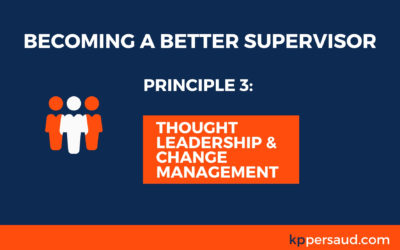
Want to become a better supervisor?
It doesn’t matter if you’re a business executive or the foreman of a construction crew, there are rules you can learn that will help you supervise others better.
As anyone who’s managed an operation and supervised employees for more than a few months knows – staying focused on business goals and leading employees to achieve these goals is a bit like herding cats! It takes lots of focus and attention, and an ability to continually refocus to move forward in the direction you want to go.
Considerations for Setting Expectations
Ownership: Affects the process of defining expectations as well as what the goals and objectives need to be for a given business period.
Private Companies: Investors and owners define the key overall performance of the company, e.g. profit, cash flow and return on equity.
Public Companies: Investor analysists put pressure and the Board of Directors to set expectations for the coming year.
The Annual Business Plan: Captures all the details of what needs to be accomplished including detailed strategies and action items.
The Strategic Plan: Provides a long-range look (3-5 years) at what needs to be accomplished. It is difficult to build a successful business in tight one-year compartments. Should align with the Annual Business Plan and vice versa.
Creating Alignment
Alignment Defined: When everyone knows what they must do for the high level goals to be accomplished. This means that the interdependence between individuals and departments must be clear as to what you must do to make someone else successful.
The Alignment Process: The two pieces of the alignment process are as follows:
Get the Stakeholders involved early in the process to define expectations. This is part of the bottom-up process. The top-down process involves ownership expectations. This type of process engages everyone in defining what goals are realistic and the stretch built into the expectations.
Communication: How the plan is communicated to all. Everyone must understand the three or four things they must do for the company to accomplish their goals.
The Content: This must match the audience. People at the individual contributor level must understand what they must do and how success will be measured. Understanding the “why” to their action brings meaning to work as well.
Staying Focused
Are people doing the right things and are they doing them well?
Distractions: People will be drawn to all kinds of important and urgent activities that may not be central to accomplishing the goals they commit to. They may need to be constantly drawn back on track. (This has been my experience in executing business plans). Great managers and supervisors help minimize distractions and maximize focus.
Timeline: Critical Mass: What am I working on, how much time should I devote to the task and do I have the required skills to successfully complete a task? These are issues that need to be addressed to keep people focused. Make sure your people feel comfortable asking for needed skills training or tools to help them do their work better and that you have authority to provide it.
90 Days Planning: Daily, weekly, monthly and quarterly meetings will help people to stay focused. I strongly recommend that annual business plans should be broken down on a 90 Days planning horizon and execution and feedback on performance be monitored monthly. Other meetings must take aim at daily schedules, problem solving and training. Communicating and listening all the way down to front lines will ensure problems are detected and resolved early to maximize productivity and minimize loss. (See the Rockefeller Habits for meeting details).
CONCLUSION
Getting things done through other people (delegating) is critical for business success. Goals usually defined at the top need to be broken down to individual tasks and communicated to everyone in the organization. Followed through at the appropriate level that actions are taken, and results realized are the responsibilities of the supervisors. I believe that supervisors must define expectations for their subordinates, create alignment among the team, and provide resources and keep the team focused on actions and results.
Recent Posts
Becoming a Better Supervisor: Part 4 (Set a Standard of Excellence)
Learn about Principle 4 of Becoming a Better Supervisor: Set a Standard of Excellence
Becoming a Better Supervisor: Part 3 (Thought Leadership & Change Management)
Read about Principle 3 of Supervision: Thought Leadership & Change Management.
Succession Planning: Doing it Right!
Succession Planning Strategies Learn how to fetch the highest price for your business, mitigate risks, and successfully hand over the reins to the new owner. Transitioning yourself out of your business could be a gut-wrenching nightmare if it is not done...
Becoming a Better Supervisor: Part 1 (Influence)
The first principle in becoming a better supervisor of others is learning how to become a person of influence. How can you do that? Learn more.
Becoming a Better Supervisor
How well do you supervise others in the workplace? Whether you’re an executive or a construction foreman, use these valuable tips to improve your supervisory skills.
Want to Sell your Business One Day? Focus on Raising its Value Now.
Imagine the day has finally come for you to sell your business. Maybe you’re ready to retire and move to the beach—or however it is you envision your ideal retirement. How can you be sure you’ll get the most from it?
HAVE A QUESTION OR WANT TO TALK MORE?
Fill out the form and I'll get right back with you.
(319) 721-3175
kp@kppersaud.com

 Hi, I'm KP Persaud...I spent 32 years working as an executive at major companies in the U.S. Now, I help others build better businesses through coaching and training.
Hi, I'm KP Persaud...I spent 32 years working as an executive at major companies in the U.S. Now, I help others build better businesses through coaching and training. 




